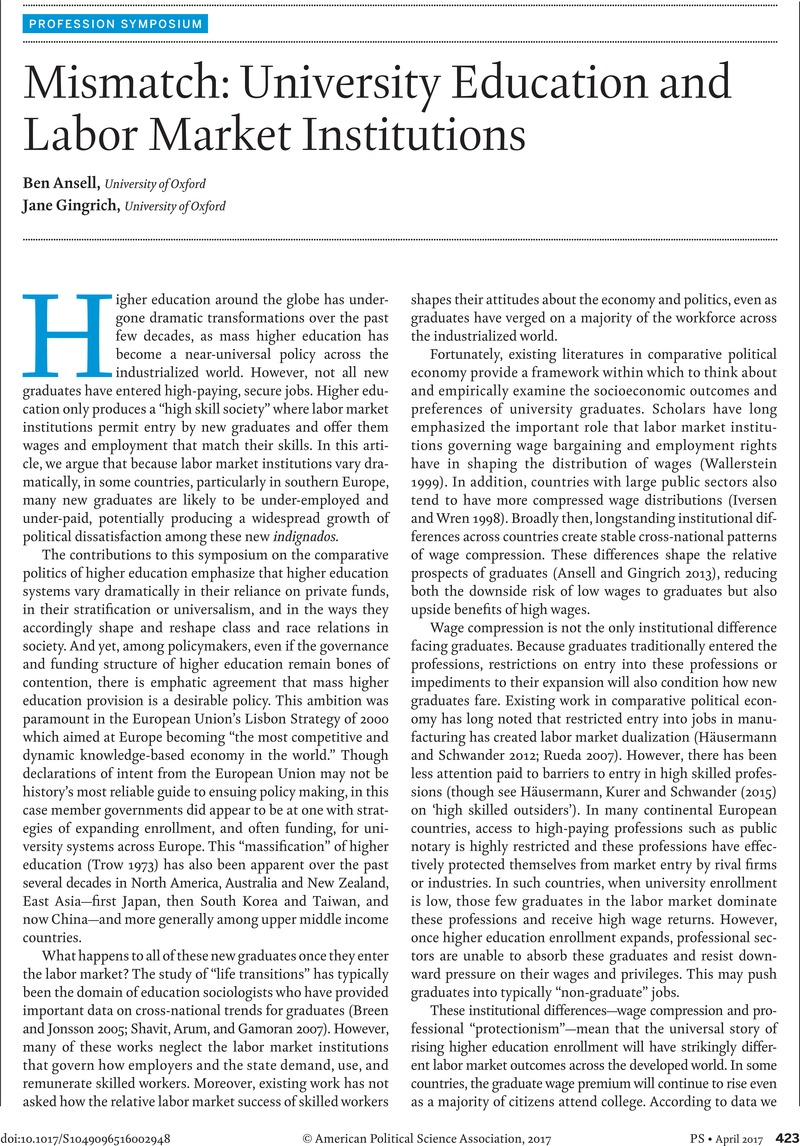Crossref Citations
This article has been cited by the following publications. This list is generated based on data provided by Crossref.
Ocampo-Villegas, María Cristina
2019.
Mercado laboral de los comunicadores corporativos en las organizaciones en Colombia.
Perfiles Educativos,
Vol. 41,
Issue. 165,
p.
81.
Trepanier, Lee
2019.
Suffering and the Intelligence of Love in the Teaching Life.
p.
159.
Sun, Xi
2020.
Construction Research on Index System of Quality Evaluation of Labour Education in China.
Journal of Physics: Conference Series,
Vol. 1453,
Issue. 1,
p.
012097.
Marques, Paulo
Suleman, Fátima
and
Costa, João Maria
2022.
Moving beyond supply‐side arguments to explain over‐qualification: The ability to absorb graduates in different models of capitalism.
European Journal of Education,
Vol. 57,
Issue. 2,
p.
342.
Maire, Quentin
2024.
Handbook of Children and Youth Studies.
p.
1.
Maire, Quentin
2024.
Handbook of Children and Youth Studies.
p.
633.
van Staalduinen, Briitta
and
Zollinger, Delia
2024.
Perceptions of Social Mobility, Gender, and Progressive Politics.
Comparative Political Studies,
Diessner, Sebastian
Durazzi, Niccolo
Filetti, Federico
Hope, David
Kleider, Hanna
and
Tonelli, Simone
2025.
The transition to the knowledge economy in advanced capitalist democracies: a new index for comparative research.
Socio-Economic Review,



